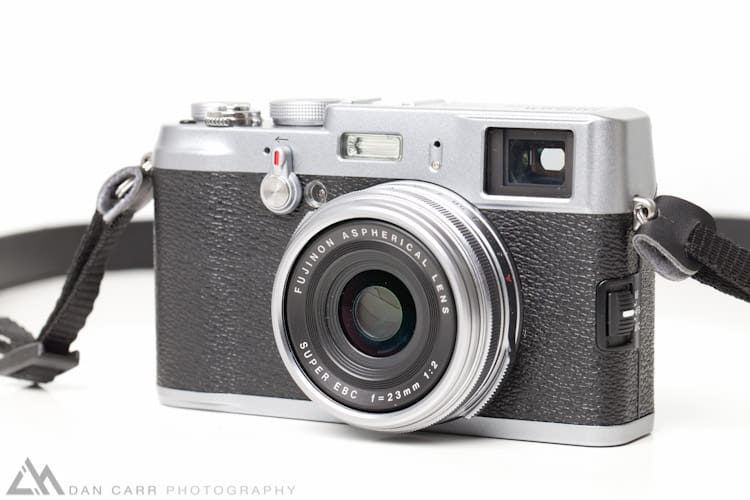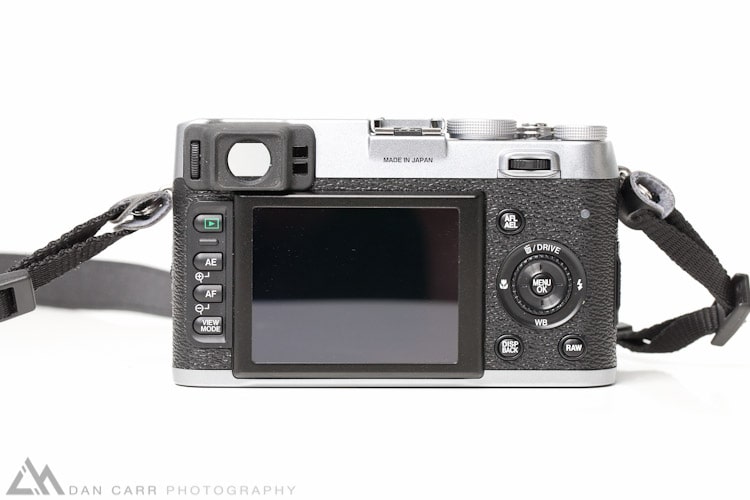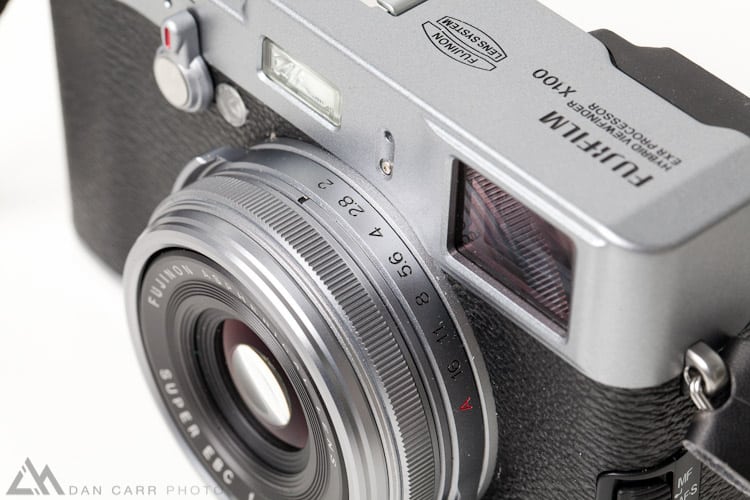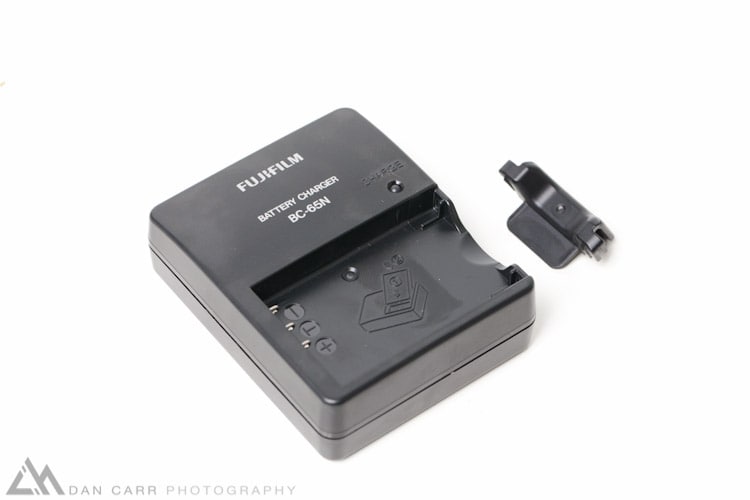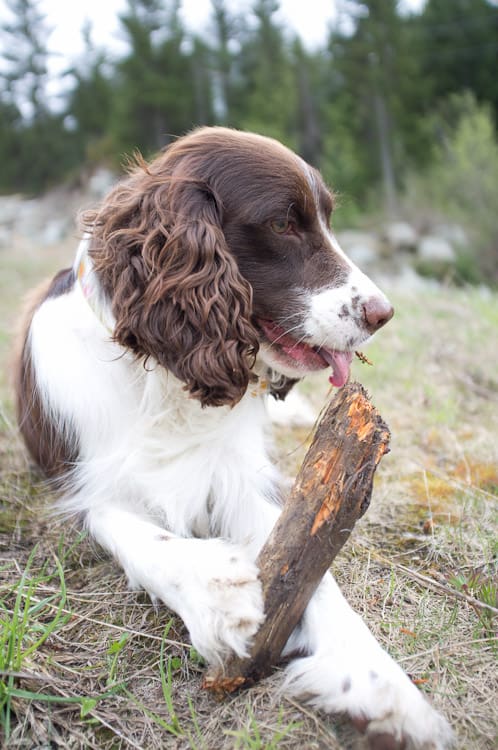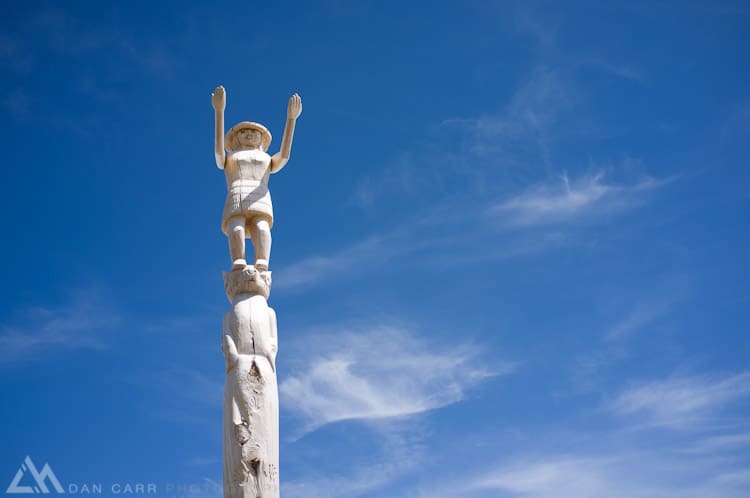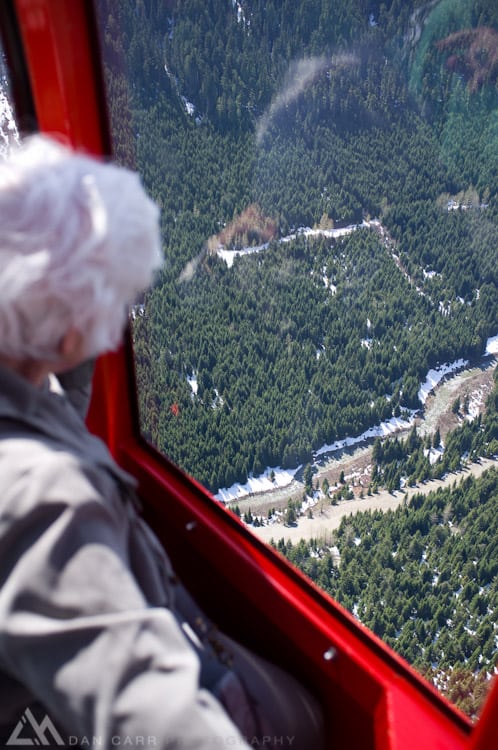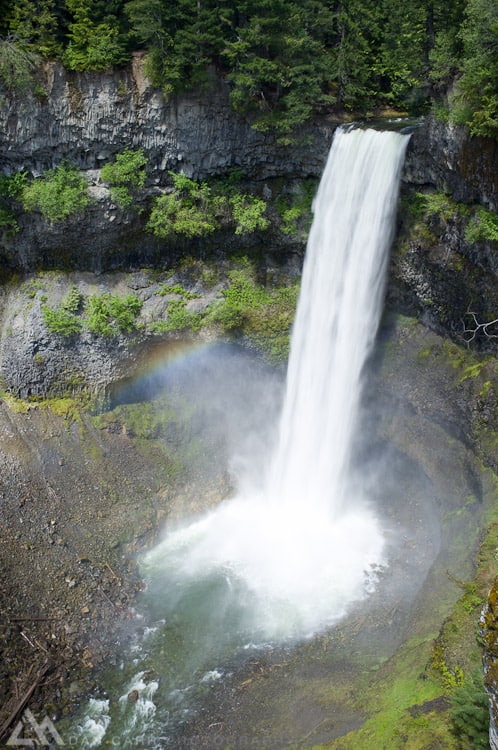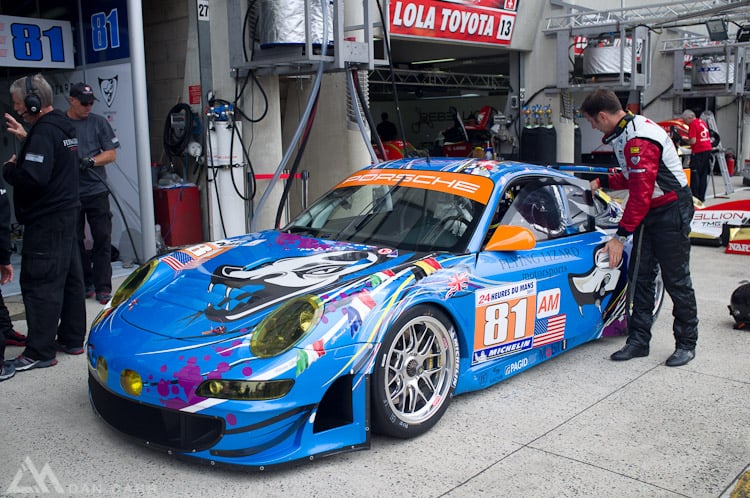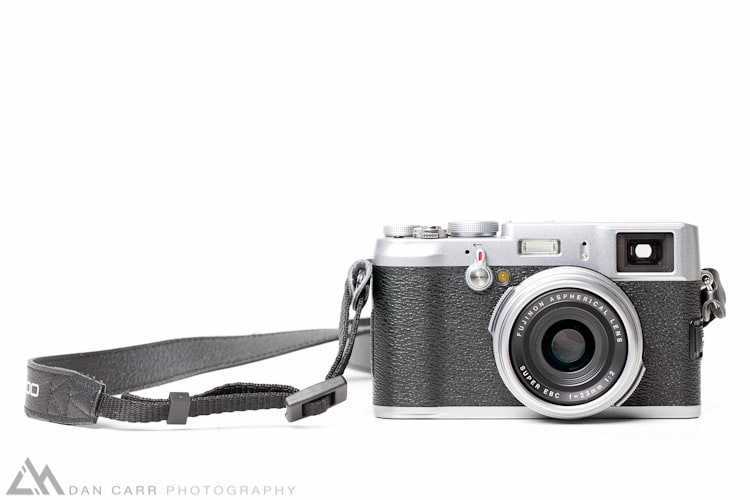Boy has this been a long time coming! We first learned about the Fuji x100 way back in September 2010 where it was shown in prototype form at Photokina. The internet was instantly ablaze with hands on impressions (as much as you can get from a prototype) and forums were full of excited people in love with Fuji’s classic design. An astute move by Fuji’s marketing department capitalized on peoples desire and the official x100 page gradually leaked a series of in-depth preview articles discussing every aspect of the camera over the next 8 months. By the time they actually started appearing in stores we knew every little detail about this camera and consumers were practically foaming at the mouth to get their hands on them. Even now, a month or so down the line , supply are fairly constrained and the x100 has clearly been a runaway sales success. This doesn’t necessarily guarantee a great product though as the clever marketing strategy and beautiful classic looks could have sold many thousands before anyone even reviewed one. Read on to find out about one of the hottest cameras from the last 10 years….
I have waited some time to post my review. By the time I got my hands on one there were already plenty of reviews all over the internet (some very hastily thrown together) so I decided to take my time with mine and see how it really fitted into my shooting and my lifestyle. After many initial reviews and reports slammed the quality of the user interface (UI) it became apparent that Fuji were going to have to perform a firmware update to fix several glaring errors in the UI’s design. At this point I decided to hold my review until the point at which this update was released so that I could effectively review the updates and how they effect the camera and it’s useability. On June 24th the update was made available on the Fuji website. I’ll run through the changes later on in this review but I can say now that I am glad I waited for this firmware and Fuji should be commended for listening to their customers and providing an update in a very quick manner. Much quicker and more comprehensively than I think anyone really expected.
Let’s start at the beginning with the important specs:
- 12.3 MP APS-C CMOS sensor
- Fixed 23mm (35mm equiv.) f2.0 Fujinon Aspherical lens
- Magnesium top and bottom plates
- Hybrid optical/electronic viewfinder
- Aperture ring on lens
- Top plate dials are metal
- Manual focus ring on lens
- 2.8? LCD screen
- 10cm close focus distance for macro shots
- Built in 3-stop neutral density filter
- 720p video recording with stereo sound
- SD Card compatible
- Diminutive size (126 x 74 x 53 )
For a technical look at some of these aspects please refer to my preview of the x100 from Dec 2010.
The x100 enters Fuji into an interesting place in the market. The compact camera market if full of interchangeable lens, mirrorless cameras from Sony, Panasonic and Olympus. Fujifilm is in fact part of the Micro Four Thirds alliance along with Panasonic and Olympus but have yet to actually venture into that part of the market. The only other large sensor fixed lens cameras on the market are , at the time of writing, the Leica X1 and the Sigma DP2. The Sigma was never met with a lot of love from the public though due to lackluster physical design and a small foveon sensor that has never been well understood by Joe public. The Leica performs very well on the other hand, but the price is prohibitive for many people so Fuji seemed to have made a smart move aiming for the spot that they did. At $1200 though Fuji are definitely still in the realms of premium products though given the ever decreasing pricing of entry level DSLRs like the Nikon D5100 so it was always going to have to be an exceptional product to succeed.
Design
Aesthetics are a personal opinion but I haven’t found anyone that dislikes the overall look of the X100. Personally I find it more attractive than any other camera on the market. Now of course this doesn’t help you take better photos but it does help to ease the burden of the price tag 🙂 The magnesium top and bottom plates look great and overall the feel of the camera in your hand is just right. It’s more comfortable on in the hand than either a Leica x1 of an M9 because it actually something o f a grip shape under your right hand. Not huge, but enough to hang on to. It also feels like a solid block and not a shell filled with bits and pieces. My biggest complaint is the plastic screen cover at the back of the camera. I dropped a USB plug on mine and it made a dent. Highly frustrating. Yes a tiny little USB plug and now I have a very noticeable scratch in the middle of my screen. The plastic they have used is simply too soft for such an expensive camera. I have never done this before but I’m going to recommend that you purchase one of those 3rd party plastic screen protectors for this camera.
The circular selection ring that is used for the main control dial is far too easy to move. They have now implemented a dial lock in firmware 1.10 but that is merely an admission that they got it wrong! The OK button in the middle of the dial is also tricky to press unless you use the corner of your finger nail. It could be better but I didn’t find it to annoyed me that much. All the other dials and buttons have a great solid feel to them. I love the feel of the shutter speed dial and the dedicated exposure compensation dial. They have a very satisfying “click” to them as does the manual aperture ring on the lens. The knurled metal of these dials feels great in your fingers. The shutter button itself is also spot on with a spongy feel half way and a solid click at the bottom to take the shot. Returning to the exposure compensation dial quickly… isn’t it great that they included this as a dedicated knob ! Yes ! Thank you Fujifilm
Battery & Charger
Normally I wouldn’t dedicate an entire section to such accessories but in this case it does warrant more than a passing mention because these elements of the camera were designed while the other guys were away on holiday. The battery (NP-95) has a notch cut out from the side of it which you would assume allows it to only be positioned into the camera in the correct manner as is the case with nearly ever camera made since the invention of common sense. For reasons that we’ll probably never know, the helpful notch is entirely ignored and you can in fact insert the battery in 4 different orientations , only one of which is actually correct.
Even though Fuji were building a premium product at a premium price, they did not see fit to design a battery charger for it. Instead they used a battery charger that they already had and simply included an infuriating plastic adapter that must be clipped to the charger in order for it to hold the NP-95 battery properly. I hope that Fuji is manufacturing a steady supply of these stupid black plastic adapters because you can guarantee that they are going to get lost by a lot of people. Throw this charger into your suitcase for a weekend trip and instantly find yourself rummaging in the corners of your case for it when you reach your destination. When I first opened the box I was simply left scratching my head. All that money spent on designing a premium cardboard box to deliver a premium magnesium shelled camera in and then just toss in any old charger then had lying round the factory ? Not only that but it also requires you to plug a full size power cord into the charger as it doesn’t have any pins that flip out from it like most chargers of this style.
In terms of battery life the camera is equally unspectacular. You’ll want to order at least one spare battery alongside your camera purchase as you won’t get even a long afternoons shooting done on one charge.
Image Quality
This section concerns the lens rather than the sensor and processing power so ISO is covered in the next section. The f2.0 Fujinon lens produces some stunningly sharp images. Most importantly it is sharp from corner to corner AND it’s sharp enough when it’s wide open. With some prime lenses you think twice about using them wide open as it really smooths things out but with this camera I found it to be acceptably sharp in the center for it to be a non issue. Wide open corners were softened up a little but nothing that ever made me think twice about using it if I wanted to. The biggest disappointment in IQ terms is the macro performance at wide apertures. Forget about using f2 with macro mode, it just looks like a mushy mess. Thankfully you can bump the iso a bit and stop the lens to f4 and things make a huge improvement and still have a very shallow DOF when things are that close.
I have included a full size version of this image on Flickr for all the pixel peepers HERE.
I have included a full size version of this image on Flickr for all the pixel peepers HERE.
I have included a full size version of this image on Flickr for all the pixel peepers HERE.
I have included a full size version of this image on Flickr for all the pixel peepers HERE.
Full size image available on Flickr HERE
There’s some nice color and detail to be looked at in the full size version that I have uploaded to FLICKR here.
ISO performance
After using a camera for a couple of months you quickly sink into a routine of which ISO values you want to use in certain situations and how how high you are willing to push things. Not only that but I find myself picking values that I’m comfortable with in changing conditions too. If a camera produces a nearly clean ISO 400 then I often won’t set it lower than that if I’m moving in and out of changeable situations. This means I don’t need to change ISO quite so often. When I tested the Leica X1 I was very impressed with it’s high ISO performance too and I do think the X1 has the edge in this are, but only very very slightly. Compared to other APS-C cameras like the 7d I didn’t see any discernible difference up to iso 2000. Above this value the X100 was on a par in terms of luminance noise but it lost a little bit of detail. Nothing major though and it would require some peeping to really notice it. My subconscious routine with this camera based on looking at hundreds of of photos as I shot them was that iso 400 and below is just great and iso 1000 you have to look pretty damn close to see noise creeping in. With only minor noise reduction in Lightroom 3 you can get iso 1600 looking stunning and I was never disappointed with 3200 and even 6400 produced images that would be fine in prints. This is an are where having a camera like this really shines. With my previous everyday camera, a Canon S90, I would hate to push it over iso 800. I wouldn’t even dare put anything over iso 1600 on Facebook let alone print them. With such good looking iso 3200 and an f2.0 lens this camera can be used in a very very dim lighting situation like my quick visit to Notre Dame shown below. Compared to other small cameras like the Panasonic Micro Four Thirds cameras and Sony NEX cameras the larger APS-C size means it kicks some major ass without being all that much larger physically and in the case of the Panasonic GH cameras it’s actually a little smaller.
It’s worth a note on JPEG Vs RAW here. I only shoot the x100 in RAW and I would advise the same thing to you. You might as well get the best possible result and the noise reduction that is applied to the JPEGs in higher ISOs is pretty heavy handed. It results in a clean looking file but you loose a huge amount of detail. Throughout this review you may assume that I am talking about RAW shooting as JPEG shooting with this type of camera seems silly to me. The only time I shoot JPEG in my work is for sporting events where a speedy turnaround to a wire agency is necessary. That’s not going to be the case with the X100. JPEGs up to iso 1250 are great though so if for reasons of memory card space or something like that you have to shoot JPEG, then you still won’t be dissapointed.
The X100 also features a highly customizable Auto ISO function that allows you to set all kinds of parameters for it’s functionality. If you want to set and forget, this is great feature and given the ISO performance I’d actually be happy using this feature in a lot of situations. I have to say I turned my nose up at it initially but I urge you to give it a try, its actually very good !

I have included a full size version of this image on Flickr for all the pixel peepers HERE.
I have included a full size version of this image on Flickr for all the pixel peepers HERE.
White Balance
I’m giving this one it’s own heading to make a point. As I was shooting in RAW with this camera I’m fine with using Auto ISO. The X100 was extremely accurate in this regard and completely outperformed my Canon 1dMKIV and Canon 5dMKII. Canon are you listening ?!??! Even in extremely tricky situations with combinations of tungsten and ambient light the X100 expertly picked a perfect balance. Coming from shooting my Canons which are notoriously crappy with Auto ISO it was a pleasure to see.
Focus
The camera features 3 focus modes; continual , one shot and manual. Manual focus is unfortunately essentially useless to me. The focus by wire system leaves you with no feeling whatsoever and requires a huge amount of bezel turning to go from infinity to MFD. There is something of a workaround to this though in that you can push the AE/AF lock button on the back to jump to a closer focus position and then “fine tune” things with manual turning of the ring.
Continuous focus mode is functional but not really something you are going to need on a camera like this. Its not fast enough to shoot any sort of sports but then you’d be mad if you wanted to do that with this camera/lens combo anyway !
Most people are going to use it in one shot mode which has two options, either a single focus point or an auto detect that selects what it thinks is the best one when you half depress the shutter. I always shoot with a central focus point and the re-compose. You can choose how big you would like the central AF point to be which is a nice feature. Focus speed is not very fast though , certainly not on a par with Panasonic’s contrast detect AF in their M4/3 cameras. In bright light it’s not frustratingly slow but in low light you don’t want to be chasing moving targets too often. There is an AF assist LED lamp which can be turned on in the menu but I found that in low light situations the camera didn’t make good use of it. The LED is actually VERY bright and yet even when something was brightly lit with it, it struggled if the rest of the scene was pitch black. Room for improvement in this area. The biggest pain in the ass though is some serious inconsistencies between focus with the EVF and the OVF. Picking an object that is close, but not closer than the MFD, in EVF mode the camera will find the focus just fine. But if you switch to OVF mode I found that many times the camera would simply refuse to focus on the exact same object at the same distance. As the OVF is offset from the actual lens there is some parallax error to be corrected which increases the closer the subject is. The camera does offer a compensated AF point though but it seems to give up a little before the MFD is reached. The EVF is great and I love using it so it’s not been much of an issue for me though. In Macro mode you can ONLY use the EVF.
Video Mode
The X100 is capable of recording 720p video at 24fps. There are no further options which is a real shame and a missed opportunity in my opinion. When the camera is in video mode there are several nuances to be aware of, none of which were addressed in the firmware 1.10 upgrade.
- Aperture and ISO must be selected before you start recording. Once recording is happening the camera is locked into those settings.
- The default screen view is similar to “detail” view in photo mode. It included frame lines , histogram, level indicator and all the other things that get in the way in this view. Unlike photo mode though, pressing the view button allows you no other option for a cleaner simple view. Instead if you want to remove these you have to delve into the menu and the custom settings and deselect them one by one to create a custom view. That’s fine if you never ever want them but there’s no quick way to switch them on and off like photo mode.
- To start recording you fully depress the shutter button. To stop recording though only requires a half press of the shutter button meaning that you can accidentally end it quite easily. This happened to me on several occasions.
- One shot focus mode is effectively non existent in video mode. Instead the camera goes inexplicably into continuous focus mode using all focus points. There is no way to select a single focus point meaning that throughout the video the camera hunts focus. Even if it locks onto a subject (say a person) in the middle of the screen, because it is using all AF points it still continues to hunt for focus on the background.
- You can employ manual focus mode which is what I would recommend for the most part, though it too has some pointless limits applied to it. Unlike in photo mode you cannot press the control dial to zoom into 100% to confirm focus. Seriously Fuji why would you randomly turn this OFF in the situation that requires it most ?!
- In manual focus mode you can use the AFL lock button to auto focus before you begin to record, which is almost a good solution except that inexplicably again they cripple the function by only enabling it with all the AF points so you have to rely on the cameras intelligence to focus on your subject rather than having the use of a selected singular focus point like the center one.
- Here’s the catch though. Focus is disabled during recording! Yes, no amount of turning the focus ring will actually change the focus whilst you are recording. Why Fuji ?!? Why ?
- In aperture priority mode the camera does not display the shutter speed that it has selected for the video.
- Shutter priority is not available neither is a full manual video mode so you can never have any control over the shutter value or even know what the camera is selecting.
These deficiencies in the video mode are such a shame because with peoples obsession with shallow DOF video, the f2 lens would be capable of some very nice footage. It seems as if Fuji’s engineers were not happy about having to include video at all so they spent very little time on it and apparently never got anyone to test it ?
Oddly though there is one Easter egg hidden in here. Pressing the AF + button applies a digital 3x zoom that functions like that found on newer Canon and Panasonic cameras by cropping the 1280 x 720 video from from the center of the sensor and not down sampling the image from the whole sensor to a smaller size. What you are left with is effectively a loss-less 3x zoom. Such a shame Fuji have made the experience practically unusable because the quality is actually pretty good. Leagues ahead of so called HD video modes in point and shoot cameras. I hope they address these issues with a further update as they are all firmware issues. I’d also like to see an external microphone input included in the next iteration of the camera.
Firmware Update
Firmware update to 1.10 solves about 90% of the problems I was having with the camera when I first got it. Before the update it was floored genius. With the update it is an exceptional camera. Below is a list of the updates that the firmware performs. The overall experience is much much better and even using the menu system seems faster and smoother. Close focusing using the OVF was impossible below about 4ft before the update but now you will find a new option in the menu system to display an adjusted focus box to compensate for more extreme parallax at close focus distances. See item #3 below. This now makes it possible to accurately focus right down to about 6-12 inches from the minimum focus distance (MFD). Below this though the camera will still fail to lock focus at all on most subjects. Something which Fuji needs to spend some time on. In this situation switching to EVF will almost always allow you to focus on that subject. Not an ideal fix as your subject might have moved by the time you do that. Essentially it’s as if the camera has two entirely different MFDs for both the OVF and the EVF Pretty weird but I hope they are working on correcting it. Many of the fixes that they implemented were quite quick and as I mentioned before, I don’t think anyone was expecting such a quick fix to so many issues. I’m hopeful then that Fuji’s technicians are working on a further update to fix some of the remaining issues that clearly run a little deeper in the software. Leica for example managed to make some nice improvements in their AF speed for the X1 with a recent update though it took them 2 years to come out with it.
Pre firmware update the main frustration was the difference in the way the camera behaved in various modes. Changing ISO value on the main screen required you to push up or down on the main dial. When viewing the exact same screen through the EVF you had to push left or right on the other control knob. No settings were kept constant when switching between drive modes and the camera failed to remember which viewing mode of the 4 available you wanted to view when you pressed play to view your photos. That meant that if, like me, you prefer to see a histogram and flashing highlights you had to press play followed by the view button 4 times to get to that screen. Take one more photo and press play again and the whole thing had to be repeated, 4 more presses. The whole system was totally unintuitive and poorly thought out. Well I’m happy to report that ALL of these odd little foibles have been cured. The camera now remembers setting between modes and remembers that I like to look at histograms so now I only have to press the play button to get to that view. It also remembers where you were last on the main menu so you don’t have to scroll down 3 pages to get to the ND filter option every time. Instead it picks back right where you left off.
<Revised owner’s manual related items>
• 1. The following functions can be locked during shooting by holding down [MENU/OK] button over 3 sec. DRIVE/Flash/White balance/Macro (set on the Command Dial – 4 direction key)
• 2. “CORRECTED AF FRAME” menu is added in “SET-UP” menu (the last line on menu page 6) to display additional AF frame (corrected AF frame for reducing parallax) which can be effectively used for macro shots. (Factory default value is set to “OFF”)
• 3. Adjustment in 1/3 step increment for shutter speed or aperture setting is enabled in Shutter-Priority AE and Aperture-Priority AE mode, on top of those in Manual Exposure mode. Shutter-Priority AE : Adjustment is controlled by rotating the command dial Aperture-Priority AE : Adjustment is controlled by moving left/right on the command control lever
• 4. In the post-view mode (display after shooting), focused area is magnified in the LCD(EVF) display when the command control lever is pressed. Cf. “IMAGE DISP.” Setting must be set to “CONTINUOUS”,
• 5. Setting of the role for “Fn” button is enabled by holding down “Fn” button over 3 sec.
• 6. Actual ISO sensitivity for shooting is displayed just after pressing shutter button halfway, when “ISO AUTO CONTROL” is set to ON.
< Improved items, not related to revised owner’s manual>
• 7. When “eye sensor” is activated by pressing “VIEW MODE” button, “EYE SENSOR” is displayed on EVF/OVF or LCD just a while to notice the status.
• 8. Macro mode ISO sensitivity, Drive mode, Dynamic range, Self-timer mode, flash mode is maintained even if shutter speed setting or aperture setting is changed. Also, even after changing viewing mode into shooting mode or turning of the camera, these values are maintained.
• 9. The size of focus frame set through viewing EVF/LCD is maintained even after changing display mode between OVF and EVF(LCD).
• 10. When “SHUTTER SOUND” is chosen, each shutter sound is performed in each menu setting
• 11. In viewing mode, the last viewed shot is maintained as even after changing into shooting mode Cf. After another image is shot after viewing former image, memory of viewing the image is cancelled and the last shot is displayed as the latest image.
• 12. When the aspect ration of the image size is set to 16:9, the line of bright frame line on OVF is displayed with aspect ratio 16:9.
• 13. Viewing mode with Photo Information on EVF/LCD is maintained even if another image is shot. On top of this issue, deleting picture directly is enabled even in viewing with Photo information by pressing the command dial up, or MENU operation is also enabled..
• 14. Occasionally, preview image on EVF/LCD after pressing the shutter halfway might be darker than live view, according to aperture setting or brightness of shooting target. This has now been improved.
• 15. When “DISP. CUSTOM SETTING” is set to OVF or EVF/LCD, the setting value is maintained even after customising the menu.
• 16. Even for only RAW data recording mode, “RED EYE REMOVAL” setting is selectable among ON or OFF.
• 17. In MF (manual focus) setting with OVF mode, OVF viewing is activated after pressing shutter half way, even if “FOCUS CHECK”(magnifying centre of the image) is displayed in EVF by pressing the centre of the command control lever.
• 18. Displaying period after pressing each command dial (Macro/Flash) is prolonged from 1.5 sec into 2.0 sec for confirming correctly.
• 19. For resuming from AUTO POWER OFF setting, the shutter release button was required to hold down halfway for a few second. For quicker operation, resuming is activated by just pressing the button.
• 20. Image quality captured by Velvia/ASTIA mode is improved on mainly shadow tone (dark area), when dynamic range is set to 200% or 400%
• 21. When “OVF POWER SAVE MODE” is set to ON and “Fn” button is set to “MOVIE RECORDING”, the camera may be unstable occasionally. This has now been improved.
• 22. Histogram display on OVF during exposure compensation is improved.
Future improvements that Fuji could do with a firmware update
Yes there’s still a few things that could be done to improve this even further.
- Add manual control to the video mode
- Allow the user to select the function of the RAW button. This button is totally useless in it’s current configuration which allows you to press it and have your next shot be RAW if you are shooting JPEG, or JPEG if you are shooting RAW. I can’t say I have ever desired this function in an camera. Especially if you are shooting RAW, why would you EVER want to decide your next shot should only be a JPEG. Fuji should enable this button to have a different function assigned to it just like the FN. button on the top of the camera which most people set to ISO button. The RAW button could be set as the ND filter and that would make people very happy as the ND filter is needed a lot with this camera due to it’s inability to run fast shutter speeds at certain apertures caused by the in-lens shutter design.
- In the panorama mode there is some serious lag in the image displayed in the EVF. The mode actually works rather well stitching things together but the lag makes it hard to pan smoothly.
- Improve AF speed across the board.
- Improve the camera’s ability to focus on close subjects when using the OVF. Even using the corrected AF frame doesn’t help when you get close to the MFD. For some reason the camera will simply not focus at all on subjects when using the OVF. Switch to EVF and and it focuses right away.
- In the play mode to view photos there is an entirely separate screen mode dedicated to applying star ratings. This function could be combined into one of the other viewing modes.
- Currently if you want to view flashing highlights on your image you can only see a tiny version of the photo on the same screen as the histogram. A full screen image with flashing highlights would be much appreciated as is available on most good cameras (and even several bad ones!)
Pros
- Excellent and often stunning image quality and very good high ISO performance.
- Solid build quality reflective of the price tag.
- Ergonomically well designed. Buttons where they should be.
- EVF is very good.
- Manual aperture ring on lens is great.
- Dedicated exposure compensation dial.
- Fuji obviously a company willing to listen to customers and make firmware changes.
- Hybrid EVF works well in most situations.
- Almost totally silent in operation makes this as discreet as a Leica.
- Built in ND filter.
Cons
- Moderately slow auto focus
- Inconsistent results in dark areas with the AF assist LED
- Huge lag when using built in flash.
- Crippled video mode is next to useless.
- Difference in ability to focus on closer objects when using the EVF and OVF.
- Soft images at wide apertures in macro mode.
- Useless RAW button is a waste of what could be a second customizable button.
- Lens hood not provided as standard. Worse still they charge a fortune for it AND it requires an equally overprices accessory mount to be screwd to the front of the lens. At the time of writing ( 2 months after camera release) I have yet to find one in stock.
- Poor quality leather shoulder strap started fraying at the edge on day 1.
- Plastic cover for LCD screen is too soft. HIGHLY susceptible to dents and scratches.
- No in-body image stabilization.
- No full screen image review with flashing highlights.
- Uses Micro USB cable instead of mini USB. When I travel i just carry a bundle of USB cables with me, now I have to remember to specifically take the exact Micro USB cable for the x100 as its the only USB device out of the 15 that I own that uses the Micro standard.
- Poorly designed battery charger
- Average battery life.
Conclusion
I won’t beat around the bush here, what Fuji have designed here is one of the best and most significant cameras to be released in the last 10 years. Yes it has it’s foibles , but many of them have been fixed with the recent firmware update and what we are left with is every ingredient for the making of a classic product. Beautiful design, stunning image quality and technological ingenuity with the Hybrid EVF. The fact that they listened to and responded so quickly to the UI problems is highly commendable and frankly Fuji have me as a customer for a very long time now. I have longed for a near pocket sized camera with this kind of quality. I know I can’t be the only photographer who has captured a decent looking image with a point and shoot camera only to think later ” damn I wish I’d take that with my DSLR.” With the X100 I no longer have that problem. Only intense pixel peeping can show the difference between this and shots from my Canon 1dMKIV at comparable sizes and the f2.0 Fujinon lens is as sharp as my Canon L lenses. High ISO performance is excellent and if Fuji can work on the speed of their AF system for the next iteration then it will be a stunner. I have no qualms recommending this camera to anyone who can afford the price tag and I do not believe it to be over priced in any way. For a professional shooter who is used to great quality cameras and lenses but wants something for every day use then this is the perfect solution. For me it keeps photography fun whenever I use it. As soon as I pick it up I want to go and shoot something and that’s saying something great because I often don’t feel that way on my “day off” when I have put my Canon cameras away. On my recent trip that saw me in Paris for the afternoon, I was genuinely gutted when my camera battery gave it’s last blink and died. I just wanted to shoot and walk and explore and shoot some more. That is what photography should be about.

